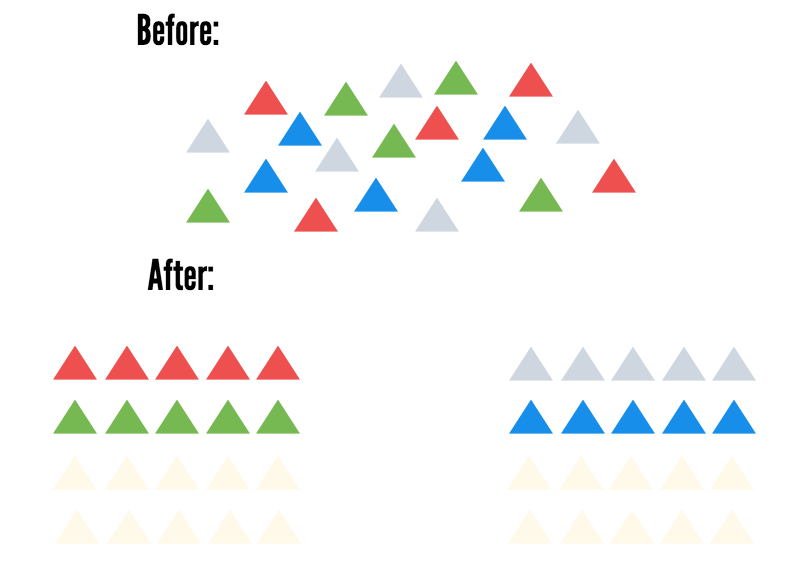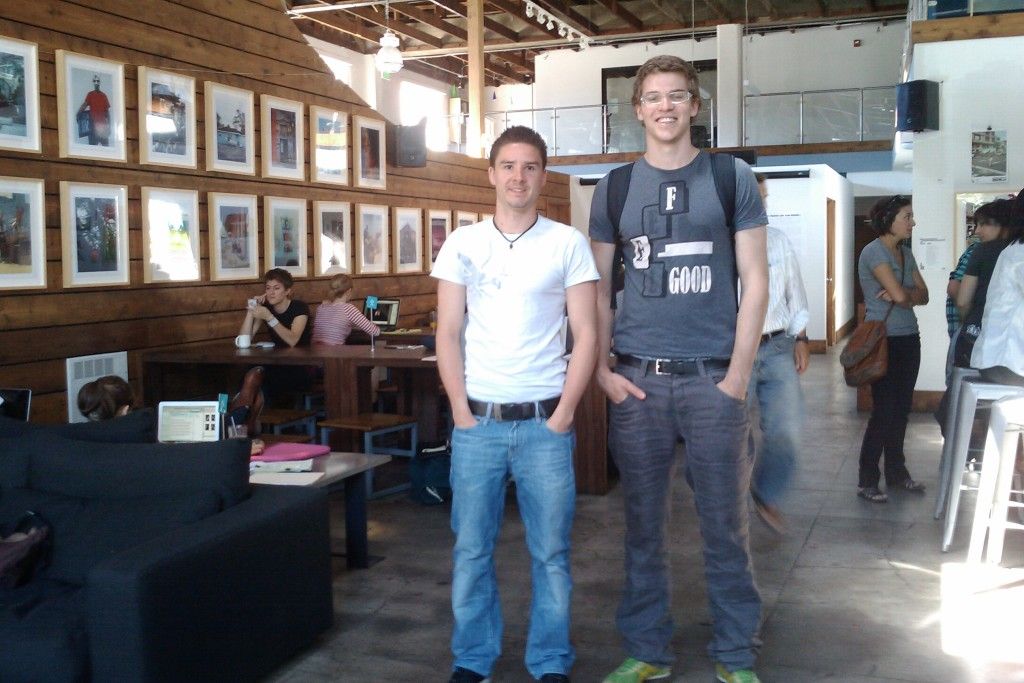The Buffer team is more than 65 people right now, which means our startup has more than doubled in size this year.
It’s been an incredibly exciting adventure!
There are a lot of big factors for this growth, as well as many changes for all of us that have gone along with it.
We recently sat down for a video chat with Buffer: Open’s Content Crafter, Courtney, to talk about why and how we’ve grown so much this year. She asked us some great and tough questions about things like the challenges of growth and scaling our culture, how big Buffer could possibly become and lots more. We wanted to share it all with you here!
In this post we’d love to highlight just a few of the things we talked about in the video and invite you to share any thoughts this brings up for you!
Why is Buffer growing so fast right now?
Our experiment with self management was an exciting time, but during it we began to notice that we hadn’t grown very much.
When we noticed that from one retreat to the next we had almost the same amount of people, that didn’t feel too ideal.
We realized that there’s so much more that we want to do; so much opportunity. We weren’t moving as fast as we wanted to, and that was a big trigger point.
Luckily, we were also growing in revenue, and had started to hit profitability.
We decided to reinvest that, thinking that ideally we should keep growing and make use of that money to provide a better product and better customer service.
As a result, we have a different situation leading up to our upcoming retreat in Hawaii in January, where we’ll almost have doubled from one retreat to the next!
How has it changed the way we work?
As we began to ramp up and grow again, we realized we had stretched our existing structure as far as we could.
We’ve never had a lot of hierarchy, especially during our self-management period. We were a small enough group that we organized naturally, for the most part, without breaking into too many specialized teams.
So when we hit 10-15 people in the product and engineering group, that was 15 people on one team. That becomes really inefficient—people are jumping from one thing to another.
The product has grown so much at 4-5 years in, and it has a much wider span. It’s hard to be able to effectively jump into all its different areas.
And ideally, you don’t want to have to split your brain between them. For people to be able to work and focus, we’ve learned that areas needs to be separate so someone can give one all their attention.
We realized that we needed to split into multiple teams—ideally, we’d have 5 people per team. So at a team size of 15 in product and engineering, that’s 3 teams.
We knew we needed more than that to handle each element of Buffer, maybe 7 or 8 teams total.
So that meant we would need to be a product and engineering team of 35 or 40! That’s what triggered this wave of growth.

The system we have now, we think, works. And yet we’re growing so fast that as soon as we hit the point where things works, we might grow to the next point and it’ll all break again.
That’s just going to be how it works now. It’s a challenge, but it’s also exciting.
How big could Buffer become?
In terms of vision, our feeling is that there’s a lot of opportunity.
We want to continue helping small businesses to have the voice they deserve to have and get more reach through social media. There are a lot of different spaces we could move into, and much more we could do to help customers with social media publishing.
The culture we’ve established and movements we’ve ended up being part of, like transparency and growing as a distributed team— we believe this is a purpose of Buffer, too, to spread these movements.
The more we can grow, the more we can show that this kind of work can scale. That’s part of the motivation for going further.
Nothing grows forever, and that’s not a good aim to have. But right now for Buffer, we think we’re far from our limit. Our growth may not always be this fast, but we will be on a pretty fast trajectory from now on.
We’ve now moved to this new structure, so we’re building up to that. Once we hit it, we probably won’t need to double every few months again—until we need a whole new structure, which could happen every few years.
How does our culture evolve as we grow?
We’ve recently started to send out periodic surveys to get a feel for how teammates are feeling at buffer, and recently the rate of growth has got quite a few people worried about the culture changing.
That’s on people’s minds, and it’s really important to talk about and think about and make changes around.
Culture evolves. Every new person we add evolves the culture—that’s why diversity is so important, because we want the culture to evolve in a diverse way.
At the same time, there is this underlying idea that you’ll have culture whether you like it or not—it’s down to whether you decide to shape it.
That’s something we’ve always believed in, and why we put our values into words when we were just 10 people. We believe we should be very deliberate about what kind of company we want to build and how we want it to feel.
The two of us used to talk about culture together. On Fridays, we would go to a coffeeshop and work on culture, make changes. Things like pair calls, the salary formula, all these things we introduced through that weekly meeting.

In the last few months or maybe even over the past year, we haven’t really been doing that.
We only scale so far as people. Now we’re building Buffer’s People Team to have a group of teammates specifically thinking about culture on a day-to-day basis.
We’ve realized the key thing to make culture scale and work is that you give away your Legos. You let other people keep working on it and improving it.
What are the biggest challenges of growth?
Many companies get better at being more efficient as they grow; however there are very few companies that maintain the same warm and fuzzy, “good vibes” sort of feeling as they grow.
Having the People Team is exponentially important because it’s exponentially rare as companies grow that they’re able to maintain that feeling when you interact with them.
We have to work on it very actively with people who think about the flows, think about how people feel, check in with others, and create processes around people and how we feel, not just how to make things more efficient.
Another challenge of our pace of growth is: How do leaders emerge, how do we know who wants to be a leader, and how can get we good at helping people become leaders?
That is fast becoming the No. 1 thing we’re talking about, because we have not done a great job at mentoring people to be great leaders.
We coach them to excel in their roles, but not to be leaders. So we don’t necessarily know how to do that well yet, but we want to learn.
Often, people come to us for advice and guidance, which is an honor. At the same time it’s not aways the best path. We’ve been thinking on what we can change over time so that there’s someone else they can go to, so we’re not a bottleneck to them making a great decision.
What’s next for Buffer?
In a lot of ways, things have changed completely at Buffer.
Here’s an example: The third whole team retreat was 16 people, and now we just had a London gathering of 15 people.
It feels like we’re reaching a level of stability now, and the early startup vibe of constantly wondering whether you’ll survive is changing a little.
We still want to move fast and make progress and improvements, but the process we’re using becomes more disciplined and focused.
Hopefully we can still have all the room for creativity and innovation that we need, but we’re moving away from the early days of “throw a bunch of stuff at the wall and see what sticks.”
There’s going to be so many different roles, so much opportunity for people to grow into new roles beyond what they can even see right now.
We have to be happy to just keep changing things. Maybe in a year’s time we’ll double again!
Over to you!
We’re so grateful to have the opportunity to grow this year and keep building products for the customers and community to whom we owe so much.
Do you have any advice or thoughts for us as we evolve and grow? We’d be keen to hear all about it in the comments!
Try Buffer for free
190,000+ creators, small businesses, and marketers use Buffer to grow their audiences every month.


